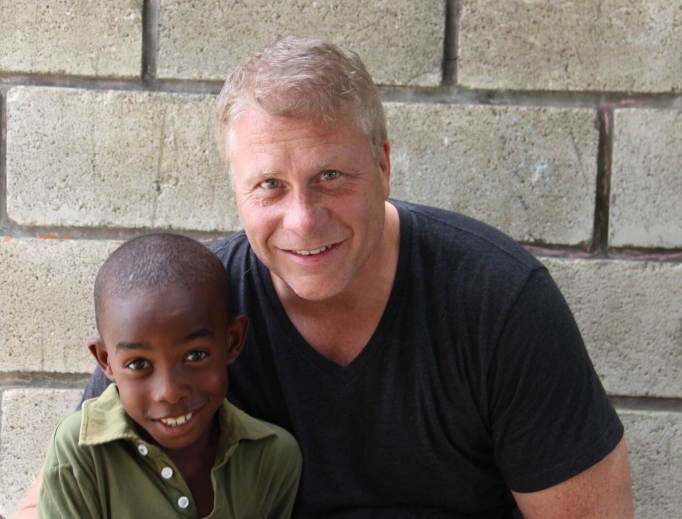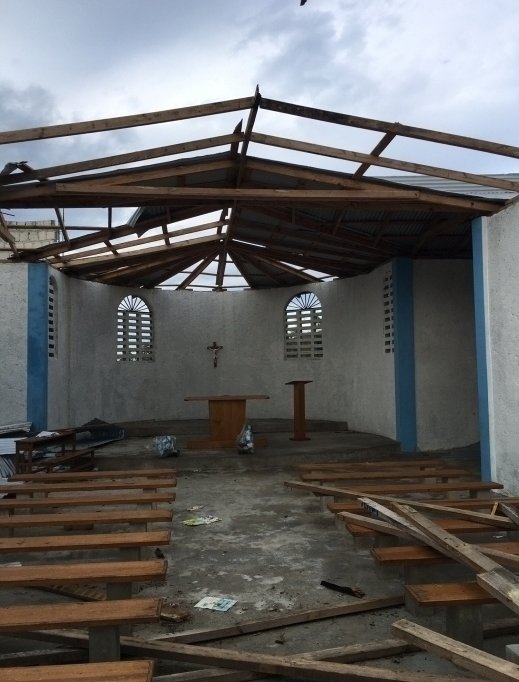Helping Hands for Haiti
Catholic aid comes post-hurricane and amid continued disaster recovery.

PORT-AU-PRINCE, Haiti — In early October, American television news carried pictures of Hurricane Matthew’s aftermath here in the United States.
But while the damage in America was undoubtedly severe and its impact will have dramatic consequences, even the hardest-hit parts of U.S. soil are expected to recover.
That is not the case in Haiti.
In Haiti, the death toll is 546, with another 128 missing. Reuters puts the total at more than 1,000. (In comparison, just four deaths were reported from a single incident in the Dominican Republic, which shares the Caribbean island of Hispaniola with Haiti. In the United States, the hurricane cost 46 people their lives.) Nearly 200,000 people were left homeless. Cities lie in ruins. Whole villages have vanished, with no sign of survivors. There are blocked roads and poor communications.
This devastation comes as many still remember the devastating 2010 earthquake.
But this and Matthew were just two of the 16 major disasters that have hit the tiny Caribbean nation since 1986. Furthermore, this doesn’t count the 18 storms that caused massive, destructive flooding and the one cholera epidemic that killed roughly 3,600 people.
Haiti’s Hardships
It is a continuation of the hardship the tiny state has faced since its birth.
After Haiti became the French colony of Saint-Domingue in 1697, colonists clear-cut the trees, leading to erosion of soil into the sea. The clay from this killed coral. This in turn killed fish, which contributed to starvation.
This state of poverty continued in Haiti after it gained its independence. It did so due to the only successful national revolution by slaves in world history. Fearing the effects this revolution might have, Great Britain blockaded Haitian ports and imposed a ransom — the equivalent of $1 billion in today’s money — in order to lift it. This caused the nascent nation to miss the Industrial Revolution, and it has never recovered.
Few Resources
Thus, said Sean Forrest of the nonprofit Haiti180, “When there’s a hurricane or a natural disaster in America, you can call 911. You can’t call 911 in Haiti. They’re just completely dependent on the help of strangers. They’ll work really hard with what they have, but they don’t have much.”
In the United States, he noted, most people are not more than 20 minutes from the nearest emergency room, but in Haiti, “For most of these people, there is no ER.”
After a disaster such as this, there is “no food, no shelter,” he said. “It’s just a horrifying experience.”
Haiti180 runs an orphanage, a school and a home for the elderly. A medical clinic is under construction. Contractors had just installed the clinic’s roof when Matthew struck. It was not a moment too soon, as 70% of those in the area lost their corrugated tin and tarp roof huts. In addition, many of the poor throughout the nation rely on gardens to help feed their families. Most of these gardens were destroyed.
Forrest estimates 80% of the livestock within the area in which Haiti180 operates were swept away in flooding, and their decomposing corpses are floating in the rivers — rivers which provide drinking water. For this reason, he said, cholera and other waterborne diseases may ultimately claim more lives than the hurricane.
And that would be a substantial number of more lives devastated by the hurricane.
Massive Damage
Matthew is the southernmost hurricane ever in the Atlantic basin. It hit everything from northern Colombia up to Virginia. In just a little more than 24 hours, winds jumped from 75 mph to 160 mph.
According to Food for the Poor, 21 of 29 fishing villages that it had previously built in southwest Haiti suffered significant damage.
The damage also extends to the waters.
Massive erosion has covered once-fertile sea beds with sand.
If fish reproduction is harmed, it will compromise the Haitians’ ability to feed themselves.
“When you look and see the destruction, it’s frightening,” said Robin Mahfood, president of Food for the Poor, in a statement. “The people of Haiti need help, and they needed it ‘yesterday.’”
Scrambling to Help
Catholic and Christian aid agencies are furiously working to help this bedeviled nation recover. Food for the Poor, for instance, has shipped critically needed items — including food, water, blankets and hygiene kits with soap, toothpaste and other personal care items — to help prevent the spread of disease.
The charity is also trying to secure antibiotics and oral rehydration salts to treat the inevitable cholera victims.
Caritas Haiti is trying to raise $275,000 to help the roughly half-million people impacted by the hurricane. In a press release, it said the funds “will provide 13,500 people with food and hygiene kits. This includes water cans, items to purify water, and blankets. Priority will be given to people in shelters, pregnant women, children, and adults with physical disabilities.”
It also reported its U.S. counterpart, Catholic Relief Services, “is committing an initial $5 million to help Haiti and other countries in the Caribbean recover from Hurricane Matthew.”
One Catholic see that has taken an active role in working to right the situation is the Archdiocese of Miami. Spokeswoman Mary Ross Agosta said money donations are critical.
With cash, she noted, the archdiocesan Catholic Charities can “negotiate with food wholesalers where we can buy many containers of food, which then get shipped to Haiti and distributed” where they are most needed.
What is especially needed, said Haiti180 co-founder Father Louis Merosne, is “long-term accompaniment, long-term solidarity.”
Said Father Merosne, a priest with the Diocese of Anse-à-Veau et Miragoâne, “We need food and materials to protect us from rain. But eventually what people really need” are the means “to prevent [this] from happening in the first place. Then we won’t need shipments of food. That means homes with good windows and good roofs. That will take time, patience and a lot of money.
“But that’s ultimately less difficult than swooping in with a bag of rice. A bag of rice might give them a few meals, but then what? There’s going to be famine because relief can only last so long. We need farming in Haiti, so we can have the sort of industry needed to grow up on our own and be the kind of country that could be hit with a disaster without it being disastrous.”
The problem with Haiti, added Forrest, who, like his colleagues in other charities, is furiously trying to raise money to meet the demands, “is the only time many remember it is when a disaster hits.”
Miami’s Agosta agreed. “The key for any disaster is: Don’t let it fall off the radar.”
She is hopeful, however, because this disaster, coming as it has in the Year of Mercy, “has demonstrated the goodness of people.”


Register correspondent Brian O’Neel
writes from Coatesville, Pennsylvania.
This story was updated after posting.
HOW TO HELP
















